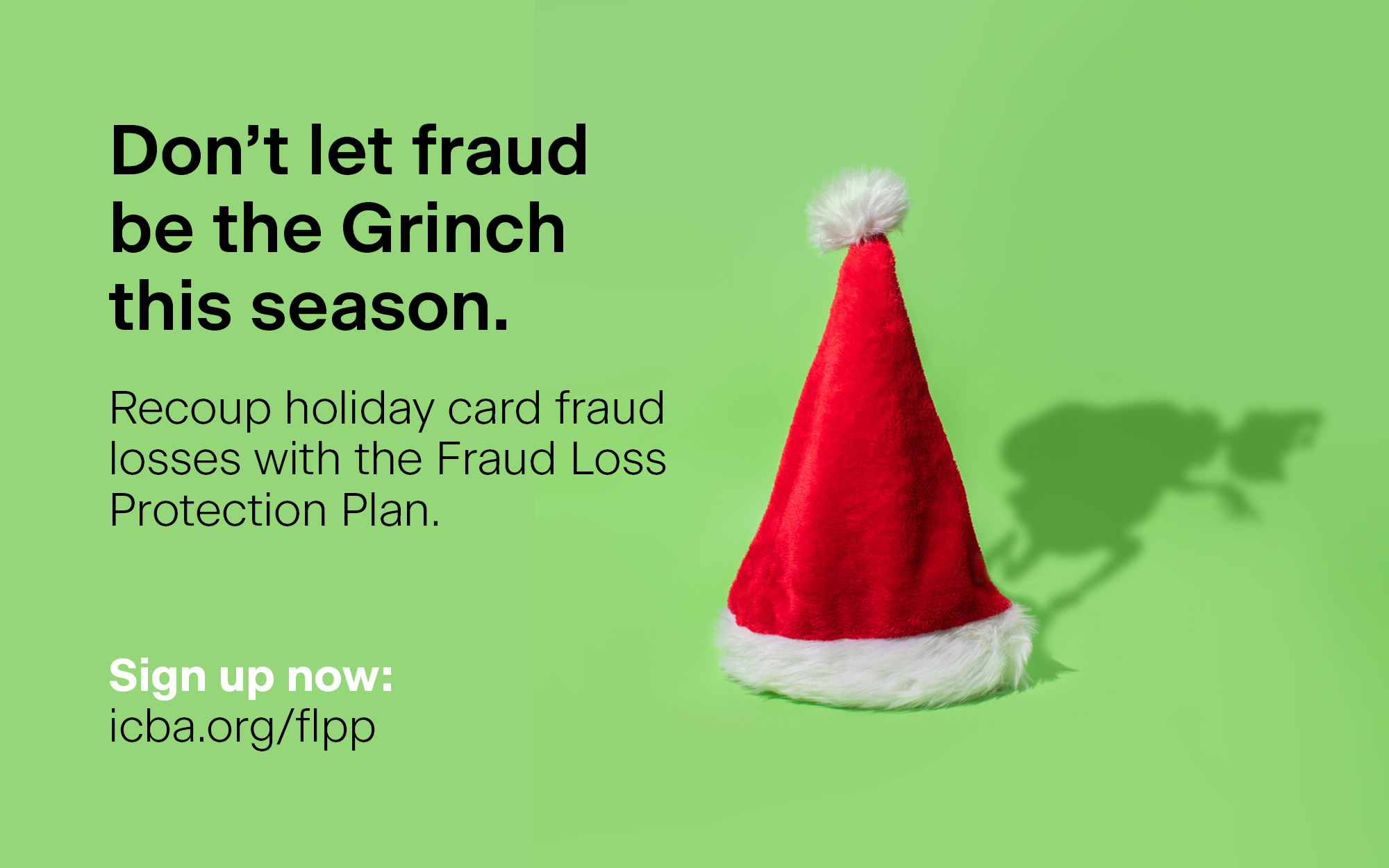Customer expectations and fierce competition—it’s never been more important to think strategically about your payments offering.
How to build a successful payments strategy
September 01, 2018 / By Colleen Morrison
Customer expectations and fierce competition—it’s never been more important to think strategically about your payments offering.
Faster. Better. Smarter. For community banks, these three concepts reverberate through payments strategies. The pressure mounts as you work to identify frictionless solutions to meet customer expectations.
But in a payments landscape where the choices change daily, community banks may feel like they are one step behind in finding the right options for their customers.
How do you evolve your payments strategy to ensure your offerings meet today’s market needs and anticipate future developments? First, you need to understand the driving factors in this dynamic environment.
Environmental factors
There is no shortage of emerging options to make payments faster, better and smarter. From bitcoin and blockchain technology to exploding digital and p2p services, environmental factors can shape how you look at payments. New technologies burst on the scene like lightning bolts, capturing the industry’s attention. With these flashy new options competing for market share, it’s no wonder that bankers may be temporarily blinded to the path ahead.
“Somebody’s going to chase the shiny red car,” says Terri Sands, director of payments risk management and strategy at $5 billion-asset State Bank and Trust Company in Atlanta. “That’s why strategy becomes so important. When multiple business lines and multiple people are saying, ‘We’ve got requests here, we’ve got requests there. This is how we can use it here,’ you get several nuggets of information [on which to act].”
This information is critical in making strategic decisions. Without stakeholder input, you run the risk of jumping on board with the next hot tech that’s pitched to you, or suffering from analysis paralysis.
To have an effective payments strategy in this market, community banks must bridge their overarching strategic focus with emerging market rhythms. New dynamics mean shifting expectations from customers, so a payments strategy needs to address what to strengthen now and in the future.
Here are the metrics of community bank payments strategy success.
1. Faster: Embrace the immediate economy.
Take, for example, faster payments. While this initiative has been ongoing for a few years in the United States, it has reached a fever pitch and become a critical point of focus for community bank payments strategies.
Most notably, in July 2017, the Federal Reserve’s Faster Payments Task Force set a goal of “making receipt of faster payments available to every U.S. consumer and business by 2020.” A few months later, The Clearing House launched its Real Time Payments (RTP) system, the first new payments system in 40 years, which clears and settles in real time.
These moves left some financial institutions scratching their heads. Were customers really demanding immediate payments?
Preliminary research from the Federal Reserve pointed to “yes.” When end users were presented with a choice between varying payment speeds, 69 percent of consumer payers and 75 percent of business payees indicated a preference for instant or one-hour payment speed.
And today’s market substantiates that concept, with p2p as a frontrunner. Venmo is widely recognized as a top p2p player, primarily due to the integration of social media with its frictionless, fast payments. It amassed $35 billion in payment volume in 2017. Snapping at its heels, bank-owned Zelle launched in June 2017 and saw its own volume explosion, with $75 billion last year. What’s more, an industry survey revealed that 54 percent of respondents who were more satisfied with Zelle than Venmo liked “how money transferred through Zelle is in my bank account immediately.”
With data like this, community bank payments strategies need to think about varying faster-payments options to stay relevant.
“Start with designing what you know your customers want, and focus on their experience. Don’t just follow what your core
provider offers.” — John Gill, Somerset Trust Company
2. Better: Enhance the customer experience.
Day-to-day interactions with services like Venmo and even retail giants like Amazon shape consumer and business expectations. For a bank, having a true understanding of customers’ needs dictates the evolution of payment offerings.
“We believe the number-one consideration is a seamless customer experience,” says John Gill, chief operating and risk officer of $1.14 billion-asset Somerset Trust Company in Somerset, Penn. “It has to be easy for customers to use.”
How to emulate this customer experience becomes the challenge du jour for financial institutions, but there is hope—from fintechs.
The World Fintech Report 2018 notes, “Fintech firms are earning a reputation for customer-centricity by bridging the gap between what financial services firms currently offer versus what today’s customers want.”
Yet, even as the bank/fintech paradigm has seen a shift from competition to targeted collaboration, experts say a community bank’s knowledge of its customer base is critical to the success of any partnership.
“Start with designing what you know your customers want, and focus on their experience,” Gill counsels. “Don’t just follow what your core provider offers.”
3. Smarter: Use data to get personal.
To that point, knowing what customers want has also become a more concrete, data-centered solution. Community banks have information at their fingertips that supports the deeper dive into a customer’s preferences.
Having this information means that you can better support your customers. Does data show that customers prefer mobile interactions? Make sure your mobile payment solutions integrate automatically into your bank’s mobile app. Do many of your customers make purchases at the same places? Sync up rewards programs with those businesses. The personalization possibilities abound.
Community banks can take things one step further by identifying partners who can help them use machine learning and artificial intelligence. These solutions get to the heart of the data, targeting customers where they are at and personalizing their experiences in a way that makes for smooth payments.
Consider risks
It’s not enough to just be faster, smarter and better. Banks also have to be safer.
“There’s one constant in banking: risk,” cautions Rayleen M.Pirnie, president and CEO of RP Payments Risk Consulting Services in Orrick, Mo. “The increased availability of technology and consumer demands are driving new and exciting developments, but these advances can increase a bank’s risk profile. Throw in increased regulations, guidance, state laws and fraud, and a bank can easily find itself going from innovative to high-risk fast.”
So, what’s a community bank to do to ensure it innovates and evolves but also mitigates risk and stays in compliance?
Pirnie suggests banks consider not only the current regulatory environment but also trends in other states, guidance and other factors. You should also include a compliance officer throughout the life cycle of a new solution, from inception to implementation.
Bottom line? Align innovative solutions with your bank’s risk tolerance.
Cash in
A payments strategy must remain focused on the individualized needs of the institution. For many banks, this means creating a payments business case that leads to revenue and profitability—a point that proves elusive for some institutions.
“When I talk with community banks about emerging payment solutions, and they tell me they are not moving forward because they cannot come up with a profitable return on investment, I ask them to flip their perspective,” says Tina Giorgio, president and CEO, ICBA Bancard. “While banks can’t charge a fee for every payment transaction, the revenue opportunities stem from the total client relationship that the payment creates. When the customer needs a loan, who will they turn to? If they’re looking for a new credit card, perhaps with better rewards, who will they consider?”
Statistics support this potential for revenue growth. According to an October 2017 McKinsey & Company report, payments are expected to grow to a $2 trillion industry and make up 36 percent of all banking revenues by 2020. Clearly, there is opportunity for community banks to make money in payments.
“As trusted providers of payments services, community banks need to look at how to convert a payment transaction into something more,” Giorgio says. “This is where your payments strategy comes into play and supports your profitability.
“Odds are if you don’t offer new solutions, your customers will turn to someone who does.”
Subscribe now
Sign up for the Independent Banker newsletter to receive twice-monthly emails about new issues and must-read content you might have missed.
Sponsored Content
Featured Webinars
Join ICBA Community
Interested in discussing this and other topics? Network with and learn from your peers with the app designed for community bankers.
Subscribe Today
Sign up for Independent Banker eNews to receive twice-monthly emails that alert you when a new issue drops and highlight must-read content you might have missed.
News Watch Today

Join the Conversation with ICBA Community
ICBA Community is an online platform led by community bankers to foster connections, collaborations, and discussions on industry news, best practices, and regulations, while promoting networking, mentorship, and member feedback to guide future initiatives.












